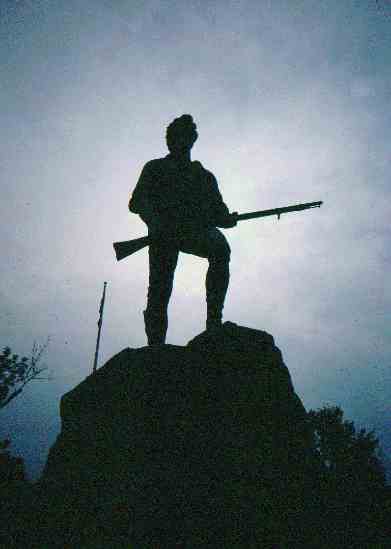
Lexington
& Concord
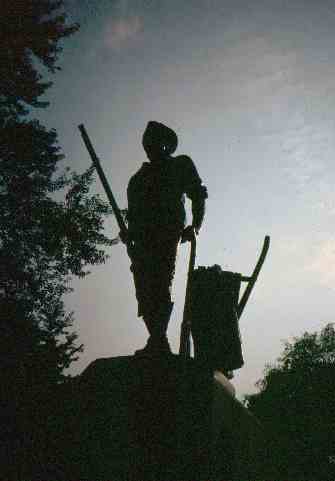
| Route 66 | Cities | Beaches |
 |
Lexington & Concord |
 |
| Your 24 hour departure from Boston will be one of the greatest historical experiences of your life, and the lives of any kids with you. You can stop the vehicle at any point and walk the exact ground Paul Revere rode that fateful night. Every landmark is still there : the Green, the road, the tavern, the houses, the bridge, the Inn, the bell tower, the stone walls and the boulders. Boston has done a fine job of preserving landmarks, but it's hard to take a photograph without a skyscraper or car or newer building appearing in the background. Not here. They have protected the landscape so you see a 1775 view. | 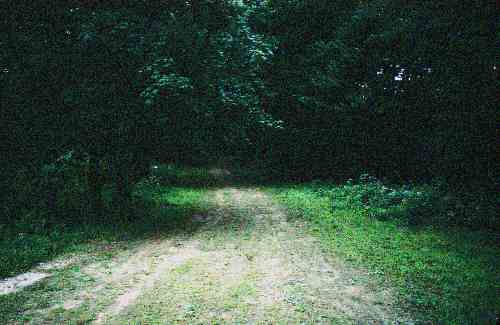 |
Revere was rowed across the Charles River below Copps Hill, being set ashore where the Constitution is now moored. Given a horse by John Larkin, he rode through the village of Charlestown, outrunning a British sentry, and headed into the woods at the scene shown here center. He had 17 miles to go. The British were ferrying soldiers and horses across the Charles to what is now Cambridge, and Revere skirted them before returning to Menotomy Road. Your route from the Shawmut is West on Causeway and half left at the Bullfinch onto Staniford. |
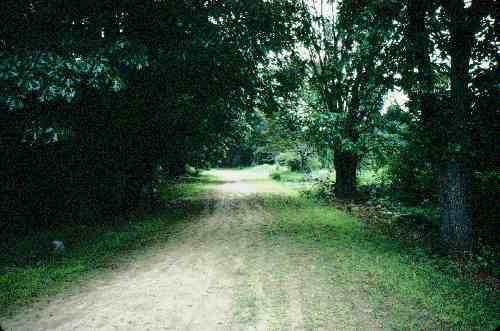 |
Turn right onto Cambridge, cross Longfellow Bridge, turn left on Memorial Drive, go to MIT, and turn right on Mass. Avenue, which goes all the way to Lexington. Use 2A and 3 through Cambridge and Arlington and Mass. Ave. to Lexington. This is the precise route the British marched. Revere, to avoid them, detoured to Medford, awoke Isaac Hall, then swung in ahead of the British and headed to Lexington. He rejoins your route where route 60 cuts across, route 3 veers off to the right, and you turn left to stay on Mass. Avenue. The Minuteman Bikeway (left and right) follows Revere's exact route into Lexington. | 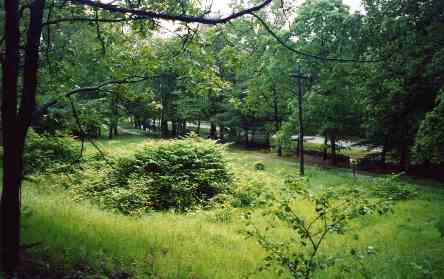 |
| As you come into Lexington, you will approach the famous Minuteman Statue (right) at the point of Lexington Green. You want to park on the right. This is Buckman's Tavern (below, left) Revere's first stop. He had been pausing at each house, banging on doors and yelling "The Regulars Are Out," "The Regulars Are Coming," and "The Regulars Are On The March." It was in 1863 that Henry Wadsworth Longfellow replaced "Regulars" with "Redcoats" because it fit the rhyme scheme of his poem, "The Midnight Ride Of Paul Revere." But on this night, Revere instructed the owner of the tavern to sound the bell (lower right) and summon all Minutemen to the Green. Revere then rode two blocks down to the Clark house where John Hancock and Sam Adams were spending the night, having come out for a meeting of the local Sons of Liberty chapter. The British hoped to capture them that night. | 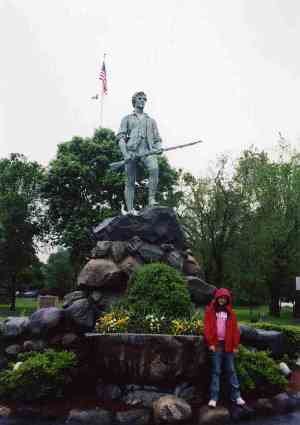 |
Revere warned his colleagues just as William Dawes rode up by a different route. Together the two horsemen returned to Buckman's Tavern, where by now all the townsmen had gathered. The riders relayed what they knew of the British numbers, arms, route and expected arrival time, and rode off toward Concord. As they left town, they were joined by third Sons of Liberty rider, Dr. Sam Prescott of Concord. The British had anticipated that the Sons of Liberty would send out riders to alert the countryside, and determined not to allow this. Revere and Daws had alerted or outrun sentries so far, but their luck ran out. Halfway to Concord, a British patrol blocked their path. Prescott cut to the left, leaped a stone wall and got away. He was the one who made it to Concord and sounded the alarm. Dawes turned back to Lexington and outran the men chasing him. He eventually made it to Concord. |
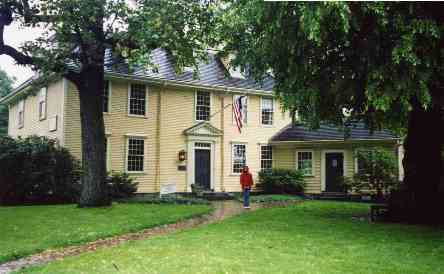 |
Soldiers grabbed Revere's bridle and at gunpoint ordered him to dismount. He was escorted back to Lexington. In the confusion of British troops arriving he was released. As drums beat in the background, Revere hurried to Clark's (below center) and helped Adams and Hancock get away down a side road. They would not return to Boston for six months. Meanwhile, 75 men had lined up on Lexington Green. They did not intend to fire. They assumed the British would keep marching down the right side of the triangle and continue on to Concord. They merely wanted to make a symbolic stand as British citizens bearing arms. |
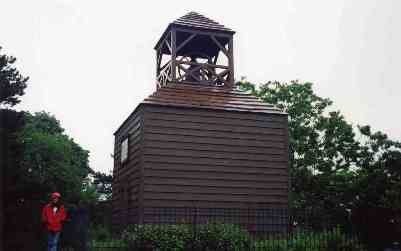 |
| In the photo below left, the tall monument and the inscribed rock mark the line across the Green along which the men stood. Colonel John Parker knew his force was outnumbered and did not want an outbreak. He ordered his men not to fire unless fired upon. The British officers saw the Minutemen's stand as defiance and decided to force the issue. They fixed bayonets and began a slow advance across the field. The intent was that faced with the bayonets the men would retreat. Indeed, Colonel Parker ordered the men to move off the Green. At that point, a shot rang out from behind a wall on the West side of the Green, the side opposite Buckman's Tavern. | 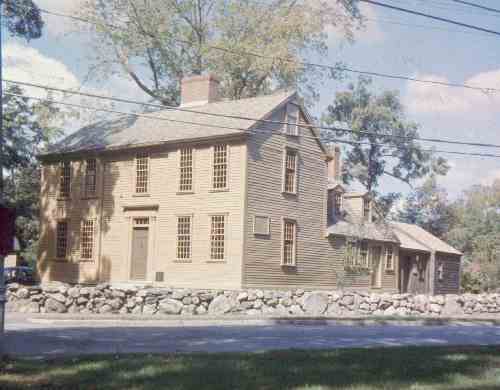 |
A British soldier fell. The British opened fire, and the Minutemen responded. The War had begun. We've been trying ever since to figure out that first shot. After 230 years, most experts suspect Solomon Chandler. He was a radical British hater who wanted a war and saw this as the chance to start it. Many accounts place him at the Green earlier but he was not in the formation. Chandler was killed that afternoon on the road to Concord, so was not around to question and did not have time to write a report. |
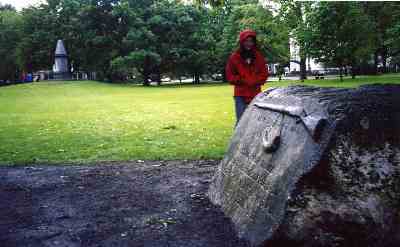 |
The British reformed and marched off toward Concord as women rushed to their fallen husbands, fathers, and sons. Meanwhile, the Sons of Liberty chapter in Concord had been moving the muskets and powder from the Colonial Inn (right) to safekeeping beneath the Old North Bridge (below center), and cannon and ball out to the very farms the British would soon be passing. By the time the British arrived they found nothing at the Colonial Inn. But an informant let them know about the stores at the bridge, so they headed there. It's only a mile from the Inn. |
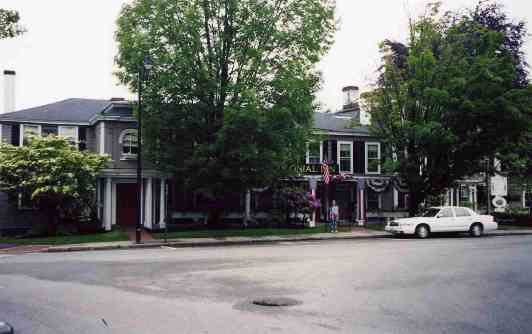 |
| Riders had gone out in all directions from Lexington to spread the alarm. Minutemen dropped their farm tools, picked up their muskets, packed a few days' supplies and headed for Concord. The nearest of them arrived while the British were searching the Colonial Inn. They guessed the bridge would be next, so headed there, but concealed themselves behind a low ridge. The British crossed the bridge and climbed the hill to a farm house, where they hoped to find muskets and powder. They weren't there. They were underwater in sealed casks. | 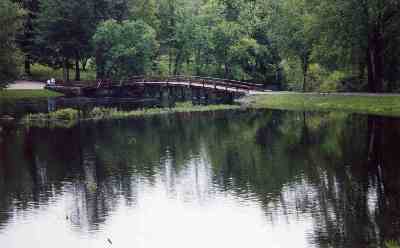 |
As the British reached the bridge on their way back, the Colonials had moved into position and sprang the trap. What occurred was the real first battle of the Revolution. The British took heavy losses, and that was only the beginning. Every hour, all day, another thousand volunteers arrived from further and further away. They were all better shots than the British.and fired from behind trees, boulders, fences and ridges. Required to march in rows on the open road, the soldiers were clear targets. |
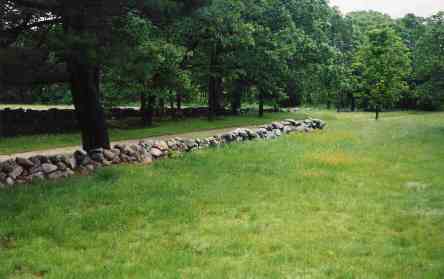 |
The landscape was ideally suited to guerilla warfare. On both sides of the road for miles were stone walls and long low boulders. The militia could catch the British in cross fire, shooting, running, reloading, waiting and shooting again. When the British lost their tempers, broke ranks and tried to chase their tormenters, a hundred snipers from the woods would cut them down. It was hopeless. And then came The Bloody Zs. Halfway to Lexington is a fairly high hill, and the road zigzags back and forth to climb up and over it. The Zs are lined with boulders. | 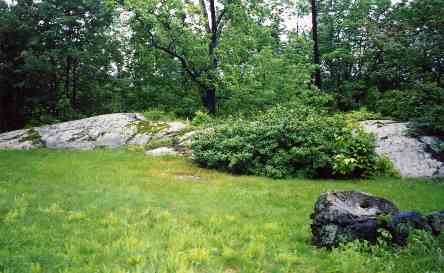 |
| Cannon and ball (below right) that were moved out of the Colonial Inn and hidden in barns were pulled out once the British were in Concord. They were hauled to the Zs and put in place, setting up a crossfire. There was no escape. The steep walls of the boulders trapped the soldiers in the bends of the Zs and the cannon and muskets kept firing back and forth from every angle. It was a massacre. The dead were buried right there. Today, once a year, England sends a contingent to honor the soldiers who died on a day when they thought they were heading out on a routine exercise and would be back for dinner. | 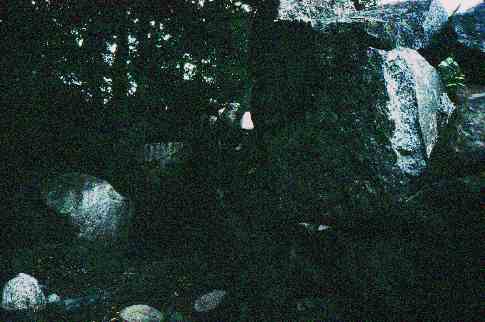 |
That day was a nightmare for the British. They faced a 16 mile retreat and more Colonials were arriving every hour. Back to Lexington, the troops met a thousand reinforcements from Boston, but they still faced the long march to the city. Back in Boston, General Gage stood on the porch of his headquarters and shook his head. "Yesterday we ruled over Boston," he told his officers. "Tonight we are besieged in it. See those campfires on Breed, Bunker, Beacon and Dorcester Hills. And still they come, from every village and farm. Americans!! We underestimated them. We are in a war we cannot win. This is more than a defeat. This is a disaster." |
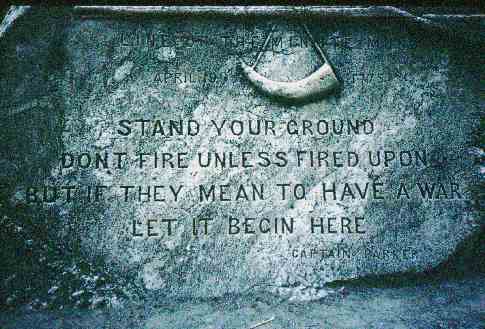 |
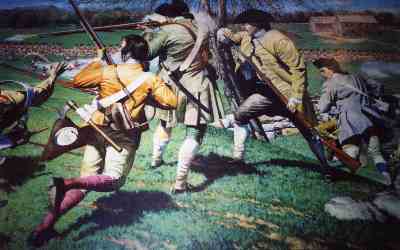 |
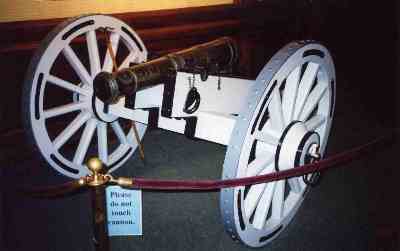 |
Lodging. We urge everyone to stay at The Colonial Inn, built in 1716. There are not many places you can spend a night that played such a crucial role in history. The number of important British and Colonial figures who ate and slept here would make it worth a night, but to add to that the fact that the Sons of Liberty were storing their powder and weapons in the basement and that was why the British were marching out here in the middle of the night makes it a once in a lifetime opportunity. And the Colonial Inn is a fine old establishment. The rooms are small, but various renovations have kept them up to date. It's expensive, but request a room in the Prescott Wing, and on a June weeknight you can get a $140 rate. Concord is a village, and the Colonial Inn is on the square. From the Inn it's a short walk to anything you want to see, from The Old North Bridge to the graveyard to the Walcott House. 1-800-370-9200. www.concordscolonialinn.com. |
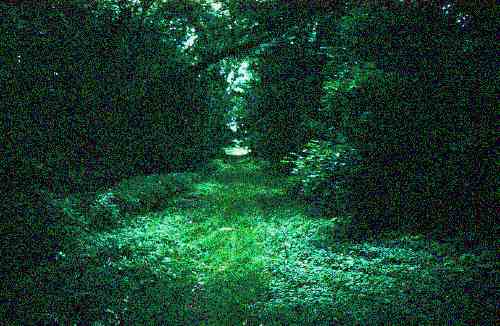
|
Restaurants. Concord is a village and there is only one legitimate restaurant. But it's a classic : Merchants Row Dining Room in the Colonial Inn. And while the restaurant is definitely upscale, they have a wonderful feature : Every day from 5-6 pm (Sunday from 4-5) you can eat The Early Bird Special for $15. You can choose from the Grilled Salmon, Prime Rib, or Daily Special, but if you only eat there once you need to pick the Colonial Pot Pie. We've eaten pot Pie across the country and this may be the best we've tasted. The Early Bird Special includes soup or salad, dessert and beverage. Bring your camera to dinner. This is a magnificent example of a Colonial era restaurant, with historical artifacts on the wall, pillar and beam construction, and old lanterns and clocks. We also eat breakfast here before heading home. The pancakes and breads are outstanding. Take Route 2, South on 495, and hit 90 for home |
|
|||
|